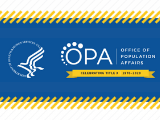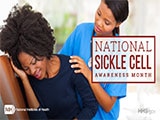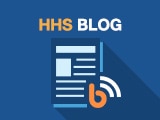Exercise May Prevent High Blood Pressure in African-Americans

Researchers who study cardiovascular health have long known that exercise is one way to keep high blood pressure at bay. But studies confirming this protective effect have mainly focused on white patients, leaving it unclear whether African-Americans, one of the most vulnerable of all populations, have stood to gain in similar ways.
In a new study, researchers are reporting the strongest evidence to date that moderate to vigorous exercise, when done regularly, can help reduce the risk of hypertension in African-Americans. The study, which was published in the journal Hypertension, was funded by the National Heart, Lung, and Blood Institute (NHLBI) and the National Institute on Minority Health and Health Disparities. Both are part of the National Institutes of Health.
“Although the protective effect of exercise had been well-documented in white populations, it really had not been clearly demonstrated for African-Americans,” said study co-author Nicole Redmond, M.D., Ph.D., M.P.H., a medical officer with the Division of Cardiovascular Sciences at NHLBI. “This is a wake-up call to African-Americans about the need for regular exercise and its importance in preventing high blood pressure.”
“The good news,” she added, “is that hypertension is a health problem that is preventable or treatable.”
African-Americans have the highest rate of high blood pressure of any racial or ethnic group in the United States – as much as 50 percent higher than whites and Hispanics. And the fallout is profound: High blood pressure greatly raises the risk for heart attack, stroke and kidney disease, and when uncontrolled, it can lead to death.
Yet, while health care providers have long recommended exercise as one way to limit this potentially debilitating condition, researchers have never closely studied the specific impact of exercise on the population most vulnerable to it. Until now.
“We’ve long known that exercise is an important part of controlling blood pressure,” said Redmond. “Now, thanks to this invaluable finding from the Jackson Heart Study, we can say that the same applies to African-American men and women. It’s a potentially lifesaving message that everyone needs to follow.”
Redmond acknowledged that getting people to boost their exercise levels weekly can be a challenge. But you don’t have to run a marathon, she pointed out. For now, including moderate or intensive exercise as part of a daily routine of good self-care is a great start. For example, brisk walking, stair walking, and cycling all meet standards for moderate activity when done for at least 10 consecutive minutes at a pace that gets you breathing harder and your heart beating faster, Redmond said. You don’t have to do all your exercise at once: Exercising 10 minutes at a time, three times a day adds up to 30 minutes a day.
Do what works best for your lifestyle and budget. If the goal is to help lower blood pressure, exercise that gets the heart rate up is critical, Redmond said.
.@NIH study provides new evidence that regular exercise can prevent high #bloodpressure in African-Americans. https://go.usa.gov/x5YFM
Celebrating the Joy and Contributions of Americans with Autism
Spoofing’s Not a Joke: Thousands Hit by Phone Scam


